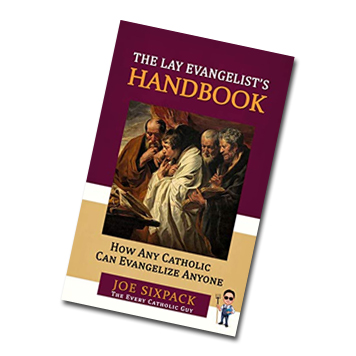Catholic Heroes… St. Catherine Of Alexandria
By CAROLE BRESLIN
The list of saints is long, and includes both men and women from all walks of life and from all disciplines. For some saints, there is a plenitude of documents and accounts of their lives from which we can draw much information. For most of the saints from the early centuries of the Church, however, there is little recorded.
There is not much information about St. Catherine of Alexandria but her impact on the early Church provides material for deep reflection.
Alexandria, a great city at the mouth of the Nile River in Egypt was the center of Hellenistic knowledge at the turn of the fourth century. St. Catherine’s family lived in Alexandra since her father, Constus, was governor of the region. She was born around 285.
Her mother was secretly a Christian and would tutor Catherine about Jesus and His Church. In addition, living in a center of Hellenistic knowledge, Catherine received an excellent education, including in the sciences. Her mother also would send her to the elders of the Christian religion who lived just outside the city.
Catherine’s mother would also encourage her to listen to the elders and ask them for advice. Once, after attentively listening to an elder, Catherine explained to the elder that she would only marry a man who was superior to her in nobility, learning, and appearance — a very worldly approach to marriage.
Thus Catherine described her “ideal bridegroom.” The elder listened patiently to her and carefully considered the young girl’s state in life, both socially and spiritually. He then told her that he knew such a man. “His countenance is more radiant than the shining of the sun, and all of creation is governed by his wisdom. His riches are given to all the nations of the world, yet they never diminish. His compassion is unequaled.”
The elder, whose name has not been preserved, then gave her an icon of the Blessed Virgin Mary holding the Baby Jesus. He instructed her to pray to Mary and she would grant her heart’s desire (Psalm 37:4). Catherine went home and did as she was told.
She prayed through the night to our Lady. When Mary asked her divine Son to look at Catherine, He refused, turning His head away as He declared that Catherine was ugly and unbelieving, and a foolish pauper. He would not speak with her until she would “forsake her impiety.”
Devastated, Catherine returned to the elder and related her experience to him. Lovingly he received her, continued to instruct her and baptized her, telling her once again to pray to Mary and her divine Son.
Once again, Catherine returned home and did as the elder advised her. The time, our Lord looked on her with love and, as with another St. Catherine nearly 1,000 years later, He gave her a ring as a sign of her betrothal to the Heavenly Bridegroom.
As Catherine grew in beauty and wisdom, many men sought her hand in marriage, but she refused. Her faith continued to blossom and deepen. At the age of 18 she decided to go before the emperor, Caius Valerius Daja Maximinus.
He ruled the Egyptian and Syrian part of the Roman Empire as the Caesar’s power waned and he brutally persecuted the Christians. Catherine was granted an audience with Maximinus, and she proceeded to berate him for the way he treated the Christians with such cruelty. Furthermore, she tried to convince him of the folly of worshiping pagan gods.
Infuriated with her impertinence, Maximinus called in fifty of his most brilliant philosophers and scientists to debate with the young girl. For hours the emperor’s men argued with Catherine and sought to debunk her Christian beliefs. She did not surrender one point and eventually they declared themselves unable to persuade the girl that she was in error.
In fact, Catherine was so convincing in the presentation of Christian truths, that she actually converted many of the emperor’s men. Once they declared their faith in Jesus Christ, they were burned to death.
Emperor Maximinus then tried to seduce Catherine by inviting her to be his royal consort, but in this endeavor he also failed, which enraged him even more. Because she not only defeated his men in the debate but also refused to submit to his demands, he had her beaten and imprisoned.
Unbeknownst to Maximinus, his wife Faustina and Porphyry, the head of his troops, decided to visit Catherine in prison when the emperor was away on a military expedition. Faustina was eager to meet a woman of such oratorical skill and presence of mind that she had overcome the most brilliant minds in the empire. Hence, she went with Porphyry to visit Catherine in the dungeon.
Despite the deplorable conditions, Faustina and Porphyry visited Catherine several times and also became converts to Christianity as they learned of the beauty and love of one Truth. Catherine’s teachings were clear and concise and full of compassion. Reportedly, over 200 soldiers as well as members of the emperor’s family also declared their belief that Jesus Christ was the Son of God. All of them were baptized.
When Maximinus returned and discovered that his wife and men had converted, they also won the crown of martyrdom and were burned to death. Surprisingly, the emperor put to death the converted but not the converter. Catherine continued to win many more souls to Christianity during her stay in prison.
Finally, Maximinus sentenced her to death on the wheel. She would be strapped on to a wheel with many spikes pointing up on it. When the executioners took her to instrument, she touched it and it burst in pieces, thwarting their attempt to kill her. (That is why this item came to be known as Catherine’s wheel.)
The emperor wondered how many more times she could defeat him in his plans. At last, he ordered her execution by beheading and she died around 305. Eventually, in an effort to save his realm, he ordered an edict of toleration around the same time that Constantine did, but his influence and his armies failed and Maximinus took poison around 313.
According to accounts of Catherine’s life and death, her remains were then carried by angels to Mount Sinai. Soon after that, a church and a monastery were built in her honor at the site.
Dear St. Catherine, you had no fear proclaiming your faith before the civil authorities and through you our Lord converted many of His enemies to the Truth. We beg of you, obtain for us the grace to stand firm and to also proclaim our faith fearlessly and convert our enemies, too. Amen.
+ + +
(Carole Breslin home-schooled her four daughters and served as treasurer of the Michigan Catholic Home Educators for eight years. For over ten years, she was national coordinator for the Marian Catechists, founded by Fr. John A. Hardon, SJ.)










